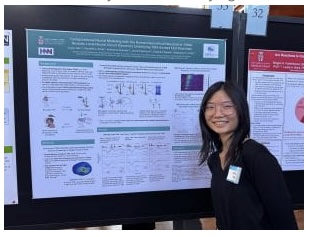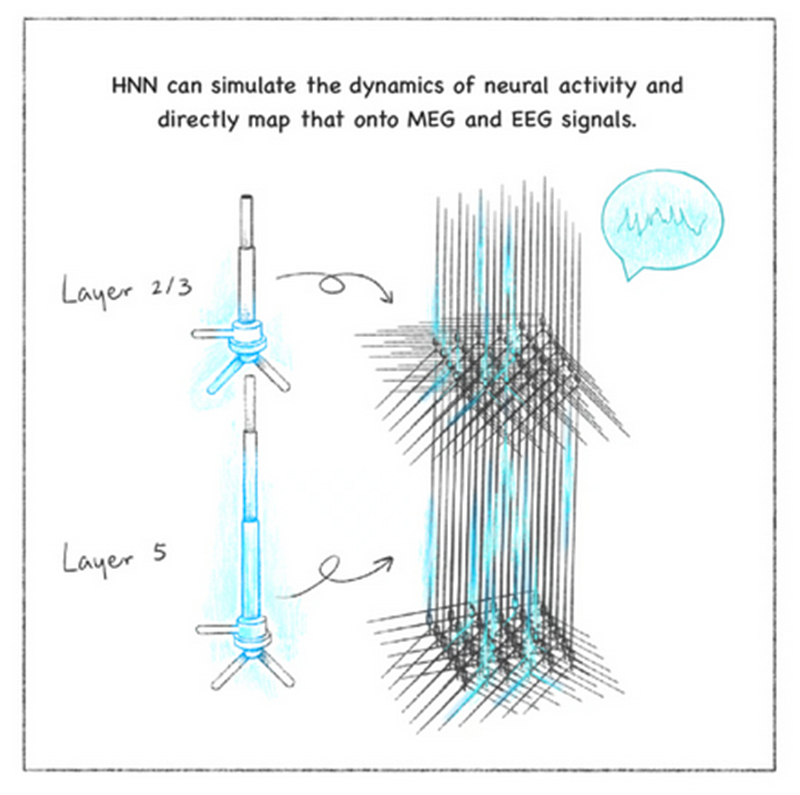In addition to her work as Research Assistant and Lab Manager in the lab of Stephanie Jones, Joyce Gao '24 is a talented artist. Her “Human Neocortical Neurosolver” comic was inspired by the research tool created in the Jones lab, which you can learn more about here and in Carney's Research Toolbox.

What drew you to science illustration? How did you get interested in art, and what made you realize it was a good medium to inform researchers about the HNN tool?
I've always used art as a form of self expression, but I only started thinking about combining science and art after I started this job in [the Jones] lab. I think the inspiration for the HNN comic came from learning to use HNN myself and organizing a few HNN workshops, and seeing what was difficult for scientists from different backgrounds to grasp. I thought a short comic that gives a very high level overview of HNN could be fun and engaging.
More broadly, I think what fascinates me about combining science and art is how art can both be used to bring clarity to scientific concepts, but also to humanize and complicate science.
What did you concentrate in at Brown?
I concentrated in cognitive neuroscience. During my undergrad, I researched neural correlates of movement preparation in the Perception, Action, and Cognition lab.

Your poster recently won a first place Research Assistant Award at 2025 Mind Brain Research Day. What sorts of research contributions do you make in the Jones lab?
I work with Dr. Danielle Sliva to use HNN to model Transcranial Magnetic Stimulation (TMS) evoked potentials, which are EEG signals evoked by TMS pulses. TMS is a noninvasive brain stimulation method that is currently used as treatment for depression, OCD, and other disorders. HNN helps us gain insights into the cell and circuit level activity of neurons that contribute to this EEG signal. This understanding can pave the way for more effective and individualized TMS treatments protocols.
What are your future career plans?
I'm still not completely sure, but I am interested in careers that will allow me to combine science/art/design in interesting ways, whether that is in science communication agencies, academia, or the biotech industry.
Also, I have a short comic on reflections on mental health research coming out soon. It should be published by around next week or so. Would it be possible to include a link to that, if the comic can be published soon?
Learn more about Gao's work on her website.